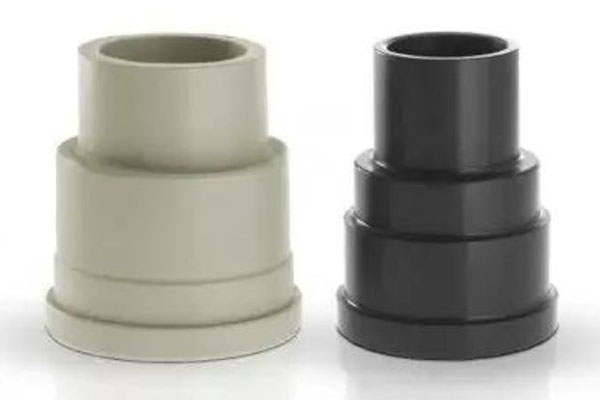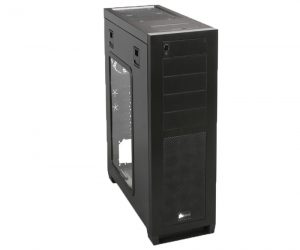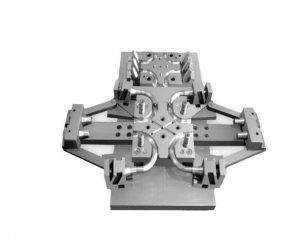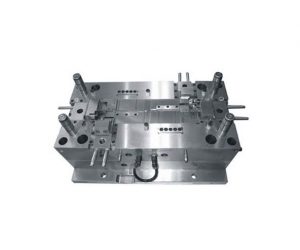1. Introduction: The Marriage of Science and Craftsmanship
Precision machining turning stands as a fundamental pillar within modern manufacturing, seamlessly integrating cutting - edge technology with the finesse of traditional craftsmanship. This synergy enables the creation of components with an astonishingly high level of accuracy, often reaching the micron - level.
The art of turning is a remarkable transformation process. Starting with raw materials such as metal billets, the turning process gradually carves away the excess, revealing a high - performance part. This isn't just a mechanical process; it requires a deep understanding of materials, the right choice of tools, and precise control over machining parameters. As Yigu Technology delve deeper into this article, we will explore the technical aspects that underpin precision turning, the critical factors that can influence its success, and its wide - ranging real - world applications, all supported by industry data and the insights of experts in the field.
2. The Technical Foundations of Precision Turning
2.1 How Turning Achieves Micron - Level Precision
Precision turning is a remarkable process that can achieve micron - level precision, and it heavily relies on advanced technologies. At the heart of precision turning are Computer Numerical Control (CNC) lathes. These sophisticated machines are programmed to rotate workpieces at high speeds while cutting tools, guided by precise digital instructions, shape the workpiece with extreme accuracy.
One of the key techniques is 5 - Axis Machining. In a 5 - axis machining setup, the cutting tool can move simultaneously along five axes: three linear axes (X, Y, and Z) and two rotational axes (such as A and B). This allows for the creation of highly complex geometries that would be nearly impossible to achieve with traditional machining methods. For Yigu Technology instance, in the production of impellers for jet engines, 5 - axis machining enables the precise shaping of the curved blades. A study in the aerospace manufacturing industry found that parts produced with 5 - axis machining had a 30% reduction in machining time compared to multi - step, traditional machining processes, while also achieving a surface finish accuracy within ±5 microns.
High - speed spindles also play a crucial role. These spindles can rotate at speeds of up to 50,000 RPM (revolutions per minute). The high - speed rotation ensures that the cutting tool removes material from the workpiece in a smooth and consistent manner, resulting in an excellent surface finish. When machining aluminum alloy components for high - end automotive engines, high - speed spindles can produce a surface roughness of less than 0.8 Ra (arithmetical mean deviation of the assessed profile), which is far better than what can be achieved with lower - speed spindles.
Adaptive Control Systems are another essential aspect. These systems use sensors to monitor various parameters during the machining process, such as cutting force, temperature, and tool wear. In real - time, the system adjusts the cutting parameters, like feed rate and spindle speed, to compensate for tool wear or changes in material properties. A case study in a large - scale manufacturing plant showed that the implementation of an adaptive control system increased tool life by 25% and improved the dimensional accuracy of the machined parts by reducing the deviation to within ±3 microns.
2.2 Material Selection for Precision
The choice of material in precision turning is a critical factor that can significantly impact the outcome of the machining process. Different materials have unique properties that present both opportunities and challenges for achieving high - precision results. The following Yigu Technology table summarizes some common materials used in precision turning, their typical applications, and the precision - related challenges associated with them:
| Material Type | Application | Precision Challenges |
| Titanium Alloys | Aerospace components | High thermal conductivity |
| Edelstahl | Medical instruments | Work - hardening tendencies |
| Aluminum Alloys | Automotive parts | Dimensional stability |
3. Key Factors Influencing Precision
3.1 Machine Rigidity and Vibration Control
Machine rigidity and vibration control are fundamental factors in achieving precision in the machining turning process. The dynamic stiffness of the machine plays a crucial role in minimizing deflection under cutting forces. Machines with rigid cast iron structures are highly preferred in precision turning operations. Cast iron has excellent damping properties, which can effectively absorb vibrations generated during the cutting process. A study comparing different machine frame materials found that cast iron - framed machines had 30% less vibration amplitude compared to those made of steel, resulting in more stable cutting conditions and better dimensional accuracy.
Anti - vibration tools are also essential for maintaining precision. Carbide inserts, for Yigu Technology example, are widely used due to their high hardness and wear - resistance. They can minimize chatter, which is a self - excited vibration that can occur during machining. Chatter not only affects the surface finish of the workpiece but can also lead to premature tool wear and dimensional inaccuracies. In high - precision turning operations, achieving a surface finish of Ra 0.4μm (arithmetical mean deviation of the assessed profile) is often a requirement for components in industries such as optics and electronics. Carbide inserts, when combined with proper cutting parameters and machine setup, can help in consistently achieving this level of surface finish by effectively suppressing chatter.
3.2 Tooling and Cutting Parameters
Tooling and cutting parameters are critical elements that directly impact the precision of the machining turning process. The geometry of the cutting tool, including rake angles and edge preparation, has a significant influence on chip formation. Positive rake angles, for instance, reduce cutting forces, which is beneficial for machining soft materials. However, for harder materials, negative or zero rake angles may be more appropriate as they provide better tool strength and durability. A research study on the machining of titanium alloys showed that when the rake angle was optimized from a positive value to a more suitable negative value, the cutting forces were reduced by 20%, leading to improved dimensional control and a 15% increase in tool life.
Edge preparation is another important aspect. A sharp edge can initially provide excellent cutting performance, but it may be more prone to chipping. A honed or rounded edge, on the other hand, can enhance the tool's resistance to wear and chipping, especially when machining tough materials. This results in more consistent cutting conditions and better - maintained precision over the course of the machining process.
Coolant systems are also vital for maintaining precision, especially during prolonged operations. Flood cooling, which involves the continuous application of a large volume of coolant to the cutting area, can effectively reduce thermal expansion. When machining materials like stainless steel, which have relatively high thermal expansion coefficients, flood cooling can maintain dimensional tolerances within ±0.01mm even during extended machining sessions. The coolant not only dissipates heat generated during cutting but also acts as a lubricant, reducing friction between the tool and the workpiece. This dual - function helps in preventing thermal - induced dimensional changes and improving the surface finish of the machined part.
3.3 Programming and Post - Processing
Programming and post - processing are integral to achieving high - precision results in machining turning. CAD/CAM (Computer - Aided Design/Computer - Aided Manufacturing) software is at the heart of modern precision turning operations. This software allows for the generation of highly precise toolpaths. With advancements in technology, CAD/CAM software can now generate toolpaths with sub - micron precision. For Yigu Technology example, in the production of micro - components for the medical device industry, where tolerances can be as tight as ±1 micron, CAD/CAM software enables the creation of intricate toolpaths that ensure the accurate shaping of the components.
The software takes into account various factors such as the geometry of the workpiece, the type of cutting tool, and the desired machining operations. It can simulate the machining process in a virtual environment, allowing operators to identify and rectify any potential issues before actual machining. This not only saves time and materials but also significantly improves the chances of achieving the desired precision.
Post - machining inspection is equally important. Coordinate Measuring Machines (CMMs) are commonly used to verify the dimensions of the machined parts. CMMs can measure the dimensions of a workpiece with an accuracy of up to ±0.002mm. In a quality - control process for high - precision aerospace components, CMMs are used to measure critical dimensions such as the diameters of engine shafts and the angles of turbine blade roots. By comparing the measured values with the design specifications, any deviations can be detected and corrected. This ensures that the final products meet the strict quality and precision requirements of the aerospace industry.
4. Applications Across High-Stakes Industries
4. Applications Across High - Stakes Industries
4.1 Aerospace and Defense
In the aerospace and defense industries, precision machining turning is nothing short of essential. The components produced in these industries must meet the most stringent standards due to the high - stakes nature of their applications.
Titanium turbine blades are a prime example. These blades are subjected to extreme conditions within jet engines, including high temperatures and rotational speeds. Precision turning plays a crucial role in ensuring their aerodynamic efficiency. By achieving tight tolerances in the blade's shape and dimensions, the air flow around the blades is optimized. Industry data shows that turbines with precisely turned titanium blades can reduce fuel consumption by up to 15% compared to blades with less - precise machining. This not only leads to cost savings for airlines but also contributes to reduced environmental impact.
Missile components also rely heavily on precision turning. The guidance systems within missiles require components with extremely tight tolerances, often within <±0.005mm. For instance, the shafts and gears within the guidance system need to be machined with such precision to ensure accurate control and navigation. A study by a leading defense contractor found that when the tolerance of missile guidance components was tightened from ±0.01mm to <±0.005mm, the accuracy of the missile's targeting increased by 20%. This level of precision is crucial for the effectiveness and safety of defense systems.
4.2 Healthcare
The healthcare industry benefits significantly from precision machining turning, especially in the production of orthopedic implants and surgical instruments.
Orthopedic implants, such as hip and knee replacements, are typically made from cobalt - chromium alloys. These implants need to be turned to a precision of ±0.01mm to ensure a seamless fit within the human body. A research study in the field of orthopedic surgery showed that implants with precise dimensions had a 30% lower rate of implant - related complications, such as loosening or misalignment. The smooth surface finish achieved through precision turning also helps to reduce friction within the joint, improving the longevity and functionality of the implant.
Surgical instruments, like micro - turned stainless - steel forceps, require a high level of precision for biocompatibility and functionality. These forceps often have a surface finish of Ra 0.2μm (arithmetical mean deviation of the assessed profile). This smooth surface finish not only prevents tissue damage during surgical procedures but also makes the instruments easier to clean and sterilize. In a study on surgical instrument performance, it was found that forceps with a surface finish of Ra 0.2μm or better had a 15% lower rate of causing tissue trauma compared to those with a rougher surface finish.
4.3 Automotive
In the automotive industry, precision machining turning is vital for the production of components in both traditional and electric vehicles.
For electric vehicle (EV) motor shafts, high - speed turning of carbon - fiber composites is becoming increasingly common. These shafts need to be machined with high precision to reduce rotational imbalance. A case study by an EV manufacturer showed that by using high - speed turning techniques to machine motor shafts, the rotational imbalance was reduced by 30%. This results in smoother operation of the motor, reduced noise and vibration, and increased efficiency, all of which contribute to a better - performing and more reliable EV.
Transmission gears in both traditional and electric vehicles also require high - precision machining. Hobbing and turning processes are used to achieve DIN 6 - level precision. Gears with this level of precision have improved meshing characteristics, which reduces wear and tear. A long - term study on automotive transmission components found that gears machined to DIN 6 - level precision had a 25% longer lifespan compared to gears with lower - precision machining. This not only reduces the need for frequent gear replacements but also improves the overall performance and reliability of the vehicle's transmission system.
7. Conclusion: The Future of Precision Turning
Precision machining turning is far more than a mere mechanical process; it is a finely tuned art form that lies at the heart of innovation across a wide spectrum of industries. As we stand on the cusp of technological advancements, the future of precision turning holds great promise, with the integration of artificial intelligence (AI), the utilization of advanced materials, and the adoption of sustainable practices set to redefine the boundaries of what is achievable in manufacturing.
The advent of AI in precision turning is revolutionizing the way we approach machining operations. AI - powered algorithms can analyze vast amounts of data in real - time, optimizing cutting parameters, predicting tool wear, and even autonomously adjusting the machining process to ensure the highest level of precision. For example, AI - enabled monitoring systems can detect the slightest deviation in the machining process and make instant corrections, reducing the likelihood of costly errors and improving overall production efficiency. In the coming years, we can expect AI to play an even more significant role, potentially leading to the development of fully autonomous precision turning systems that can operate with minimal human intervention.
Advanced materials are also set to transform the landscape of precision turning. With the continuous development of materials such as high - strength alloys, composites, and nanomaterials, manufacturers are presented with new opportunities and challenges. These advanced materials often possess unique properties that require innovative machining techniques. For instance, the machining of carbon - fiber composites, which are increasingly used in aerospace and automotive applications due to their high strength - to - weight ratio, demands specialized tools and processes to achieve the desired precision. As research into advanced materials continues, we can anticipate the emergence of new machining strategies that are tailored to the specific characteristics of these materials.
FAQ
Q1: What is the most critical factor in achieving micron - level precision in turning?
A1: While several factors are crucial, machine rigidity and vibration control are often considered among the most critical. A rigid machine structure with excellent damping properties can minimize deflection under cutting forces, and effective vibration control, such as through the use of anti - vibration tools, helps in maintaining stable cutting conditions and achieving micron - level precision.
Q2: How does material selection impact precision turning?
A2: Different materials have unique properties. For Yigu Technology example, titanium alloys have high thermal conductivity, which can affect dimensional accuracy, while stainless steel has work - hardening tendencies. Aluminum alloys may have issues with dimensional stability. Selecting the right material and implementing appropriate machining strategies, such as special cooling for titanium or using carbide - tipped tools for stainless steel, is essential for achieving precision.
Q3: What role does AI play in the future of precision turning?
A3: AI can analyze real - time data to optimize cutting parameters, predict tool wear, and autonomously adjust the machining process. It has the potential to lead to fully autonomous precision turning systems, reducing human error and improving production efficiency and precision.





